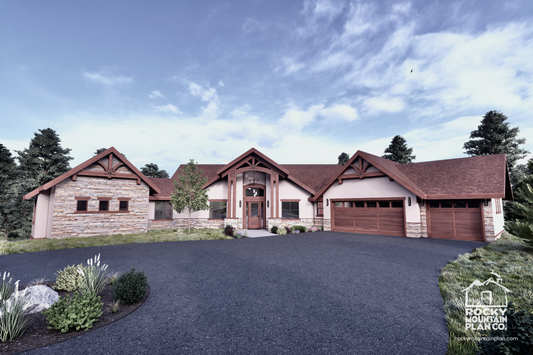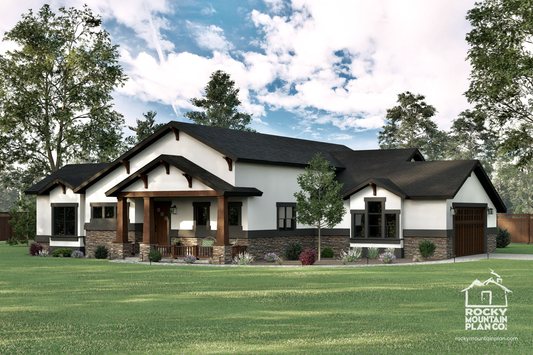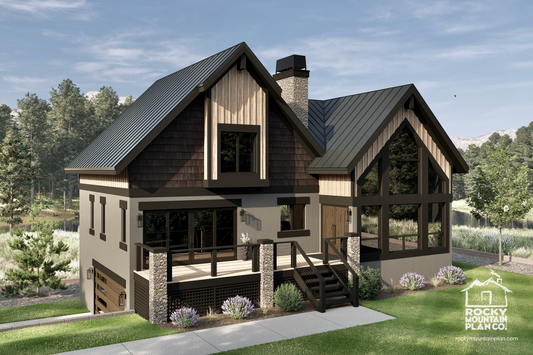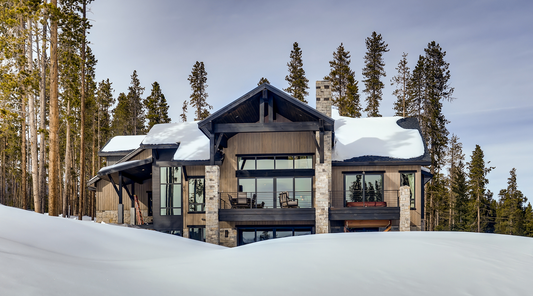
Starting Your Home Building Journey: Essential Tips for First-Time Homeowners
Share
Hello, future homeowners! Are you ready to embark on one of the most thrilling adventures of your life? Building your first home is like setting off on a great mountain expedition to reach the summit of your dreams. The journey may seem daunting at first, but with the right preparation and a detailed map (or in this case, a solid house plan!), you’ll navigate the terrain with confidence. Let’s chart your course to homeownership by mapping out the essential tips that will guide you from base camp to the peak – your completed dream home.
Mapping Your Financial Terrain: Understanding Your Budget
Before any great expedition, a mountaineer studies the terrain. In your home-building journey, your budget is your financial map and compass, guiding your every step. Knowing what you can afford and planning for unexpected costs (those pesky hidden expenses!) is crucial. Here’s how to carefully plan your route and avoid unexpected financial cliffs:
- Total Costs Breakdown: Think beyond just bricks and mortar. Your budget needs to encompass land acquisition, design fees, permits, construction materials, and labor costs. Don’t forget to factor in utility hookups, landscaping, and interior finishes, all of which can sneak up on you. There are many online calculators that can help you estimate your costs. The key elements to look for in a calculator are customizable inputs to adjust the materials and finishes for more accuracy, as well as a way to input your location, because regional pricing adjustments will affect material and labor costs. A few calculators to get you started are:
- New Home Construction Calculator by Building Journal
- Build-A-House Calculator by Home-Cost (Paid)
- Emergency Fund: The Essential Oxygen Tank: Just like you wouldn’t scale a mountain without backup oxygen, don’t head into a build without an emergency fund. Set aside at least 10-15% of your budget for unforeseen events – whether it’s bad weather delaying construction or material costs suddenly rising. This fund ensures you won’t be caught off guard.
- Financing Your Journey: Most adventurers need sponsors, and most home builders need a loan. Explore construction loans, which are a bit different from your typical mortgage. They're designed to fund your project in stages, so you only pay interest on the amount spent during the construction. Shop around for lenders who offer the best rates and terms, and make sure you understand the draw schedules.
- Budgeting for the Extras: Much like packing for an expedition, make sure you account for the small but critical items. Think appliances, fixtures, and those finishing touches that give your home personality. These are often left out of initial budgets but can add up quickly.
Scouting Your Base Camp: Choosing the Right Location
Location, location, location – it’s the mantra for real estate, and for good reason. Choosing where to build your home is akin to setting up your base camp. It's about finding the perfect starting point that supports all future endeavors. Your home’s site affects not just your daily life but its future value too. Here’s how to find your perfect site:
- Research the Terrain: Whether you’re dreaming of a quiet mountain retreat, a slim drive-under on your favorite city block, or an open concept family home in a vibrant suburban neighborhood, your plot of land is your home’s foundation – both literally and figuratively. Consider your proximity to schools, work, amenities, and natural features. Also, look into how the land’s topography will affect construction, especially if you’re building on slopes or in areas prone to environmental factors like flooding or heavy snowfall. These sites may require additional engineering.
- The Resale Summit: Even if you plan on staying forever, life can be unpredictable. Building in an area with strong resale potential ensures that your investment is safe no matter what lies ahead. Research the area’s future development plans and look for regions with growing infrastructure and job opportunities.
- Local Climate Considerations: Just like different mountains offer different challenges, climates vary from place to place. Building in a snowy area? Opt for designs that can handle heavy snow loads. In a sunny, hot region? Prioritize energy-efficient designs with shade and ventilation features.
Selecting the Perfect House Plan: Your Map to the Summit
Every mountaineer needs a map – a clear route to reach the summit. Similarly, selecting the right house plan lays a path to achieving your home-building dreams. Picking the right plan isn’t just about counting bedrooms and bathrooms. It’s about finding a layout that fits your life. Here’s what to consider:
- Define Your Adventure: Whether you’re an introvert who loves cozy nights in or a social butterfly who loves hosting friends and family, your house plan should reflect your lifestyle. Do you need an open-concept living area for entertaining or separate, quiet spaces for work and relaxation? Think long term – this is your home for years to come.
- Flexibility is Key: Just like a mountaineer always prepares for changes in weather, you should look for a house plan that allows for flexibility. Can a bonus room be transformed into an additional bedroom? Or a bedroom into a home office or hobby space? Check your zoning and HOA rules too – is there room on the lot for possible expansions or the option to add an ADU? Consider plans that offer extra rooms, basements, or expandable spaces that can adapt to your future needs.
- Highlight the View: What’s the point of reaching the summit if you don’t enjoy the view? Maximize natural light with open floor plans and large windows that bring the beauty of your surroundings into the home. If you're building on a hillside or near scenic areas, make sure your plan takes full advantage of the vistas. And make sure to consider site orientation and sun exposure too (read more about how sun exposure affects your home), as these factors can have a significant effect on your daily life and energy bills.
Forming Your Expedition Team: Working with Contractors
Building a home requires a reliable team, much like assembling a group of skilled climbers and guides to tackle a challenging ascent. The quality of your home depends heavily on the quality of the construction team. Choose experienced, reliable professionals and maintain clear, ongoing communication to ensure your vision becomes reality. Here’s how to assemble the best team for your journey:
- Vet Your Guides: Don’t hire just anyone to lead you up the mountain – make sure your contractor has the proper certifications, a solid track record, and glowing references. Look for licensed professionals with experience in residential construction. Check their references and look at their past projects to see if their work aligns with your vision.
- Detailed Contracts: Your Route Map: Like a detailed map for your climb, your contract should lay out everything: scope of work, materials, payment schedules, and timelines. Never leave room for miscommunication – it could mean the difference between smooth sailing and a detour.
- Communicate Like You’re on a Lifeline: Clear, consistent communication is key in any expedition. Don’t be shy – ask questions and express your expectations. Establish a regular schedule for updates and be proactive in addressing issues. Remember, a good relationship with your contractor will impact the quality and timing of your build.
Ascending the Ridge: Navigating the Construction Process
Now that you’ve set your course, it’s time to climb! The construction process is your ascent, where each phase brings you closer to the peak – your completed home. Here’s how to navigate the key phases and avoid losing altitude:
- Site Preparation: The First Footstep: The first step is preparing the land. This includes clearing the site, grading the land, and making sure everything is ready for your foundation. Make sure you’ve obtained all necessary permits before breaking ground – think of it as checking the weather before setting off on your climb.
- Laying the Foundation: Establishing Your Base Camp: The foundation is literally the base of your build, and just like base camp, everything depends on its strength and stability. Whether you’re pouring concrete for a slab or constructing a basement, this step ensures your home is solid and secure.
- Framing: The Skeleton of Your Ascent: Framing is where you’ll start to see the bones of your house take shape. This phase includes constructing the walls, roof, and floors. Regularly check on progress during this phase – it’s like reaching a high-altitude checkpoint where small corrections can still be made.
- Mechanical and Systems Installations: Gearing Up for the Final Push: With the frame in place, it’s time to install the major systems – plumbing, electrical, and HVAC. These are the ropes and tools that will make your home function smoothly. Ensure everything is inspected before moving on to finishes.
- Lock-Up Stage: Securing the Summit: At this stage, your home is fully enclosed, with windows, doors, and exterior finishes completed. Now, you’re in the home stretch! Focus shifts to interior finishes like drywall, flooring, cabinetry, and painting. It's the moment when your vision really comes to life.
- Final Inspections: Planting the Flag: The last step of your climb involves safety inspections to ensure everything is up to code. Once you’ve passed, you can celebrate – your summit has been reached!
Building your first home is more than just a project – it’s an adventure filled with excitement, challenges, and triumphs. With the right plan, budget, and team, you can conquer the summit of homeownership and create a space that reflects your dreams and ambitions.
Ready to start your home-building adventure? Check out our diverse collection of house plans! Whether you’re looking for something cozy and quaint or grand and luxurious, we have plans to fit every lifestyle and budget. Your dream home is just over the next ridge – let's get there together!







